|
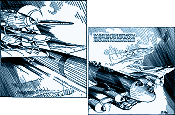 Arch Whitehouse's air adventure stories
with wily ballistics expert and ace pilot Kerry Keen (alter ego,
The Griffon) are one of my favorite reads in the vintage Flying Aces
magazines. While testing their amphibious Black Bullet over Long Island, aviator
Kerry Keen (the Griffon) and mechanic Barney O'Dare spot a stolen experimental aircraft
- a winged fortress capable of carrying tanks. When Barney vanishes mysteriously,
Keen discovers his partner has been entangled in a plot to steal "Avalin," a revolutionary
armor formula. The trail leads to kidnapped movie star Doreen Yardley, who unknowingly
received the formula- all while protecting Keen's masked identity... Arch Whitehouse's air adventure stories
with wily ballistics expert and ace pilot Kerry Keen (alter ego,
The Griffon) are one of my favorite reads in the vintage Flying Aces
magazines. While testing their amphibious Black Bullet over Long Island, aviator
Kerry Keen (the Griffon) and mechanic Barney O'Dare spot a stolen experimental aircraft
- a winged fortress capable of carrying tanks. When Barney vanishes mysteriously,
Keen discovers his partner has been entangled in a plot to steal "Avalin," a revolutionary
armor formula. The trail leads to kidnapped movie star Doreen Yardley, who unknowingly
received the formula- all while protecting Keen's masked identity...
 This article entitled "The Boom in
R/C Boats" appeared in the June 1955 edition of Popular Electronics
magazine which, during the early years of its existence devoted quite a bit of print
space to radio control airplanes, boats and cars. As with all things electronics,
a huge surge in consumer interest was occurring with over-the-air communications.
Bill (William) Winter served as the editor of the Academy of Model Aeronautics'
(AMA's) American Modeler and American Aircraft Modeler magazines
from 1966 through 1974, but his efforts to promote all form of modeling - airplanes,
helicopters, cars, boats, trains, and rockets - covered many decades. His first
recorded article, "Building the Famous Udet Flamingo," (co-authored by Walter McBride),
was published in the March 1935 issue of Universal Model Airplane News
magazine... This article entitled "The Boom in
R/C Boats" appeared in the June 1955 edition of Popular Electronics
magazine which, during the early years of its existence devoted quite a bit of print
space to radio control airplanes, boats and cars. As with all things electronics,
a huge surge in consumer interest was occurring with over-the-air communications.
Bill (William) Winter served as the editor of the Academy of Model Aeronautics'
(AMA's) American Modeler and American Aircraft Modeler magazines
from 1966 through 1974, but his efforts to promote all form of modeling - airplanes,
helicopters, cars, boats, trains, and rockets - covered many decades. His first
recorded article, "Building the Famous Udet Flamingo," (co-authored by Walter McBride),
was published in the March 1935 issue of Universal Model Airplane News
magazine...
 It would be interesting to do a side-by-side
comparison on what was considered engineered
control line
stunt model airplane design in 1957, when this article was written, to what
is today considered to be optimal design criteria. I am trying to get back into
control line stunt flying and have one model built currently, the Enterprise-E.
It has been flown a few times and is (was) extremely sensitive on the controls when
set up per the plans. A little bit of control handle movements resulted in a huge
amount of both elevator and flap deflection. Fortunately, access to the flap control
horn is available through the removable top fuselage hatch, so I was able to relocate
the pushrod from the bellcrank to the flap horn, and then from the flap horn... It would be interesting to do a side-by-side
comparison on what was considered engineered
control line
stunt model airplane design in 1957, when this article was written, to what
is today considered to be optimal design criteria. I am trying to get back into
control line stunt flying and have one model built currently, the Enterprise-E.
It has been flown a few times and is (was) extremely sensitive on the controls when
set up per the plans. A little bit of control handle movements resulted in a huge
amount of both elevator and flap deflection. Fortunately, access to the flap control
horn is available through the removable top fuselage hatch, so I was able to relocate
the pushrod from the bellcrank to the flap horn, and then from the flap horn...
 When Melanie and I got married in 1983,
part of her dowry included some of the toys she had as a little girl. A
Hasbro Lite-Brite
was one of them. Our kids played with it when they were young, but somewhere along
the line during our many household moves, it disappeared. We probably donated it
to the Salvation Army at some point - a lot of our stuff has ended up there. About
a month ago we started watching for a good one on eBay that didn't cost too much.
Finally, there was a 1967-vintage Lite-Brite in like-new condition up for auction
that we got for around $45. It has a nice box... When Melanie and I got married in 1983,
part of her dowry included some of the toys she had as a little girl. A
Hasbro Lite-Brite
was one of them. Our kids played with it when they were young, but somewhere along
the line during our many household moves, it disappeared. We probably donated it
to the Salvation Army at some point - a lot of our stuff has ended up there. About
a month ago we started watching for a good one on eBay that didn't cost too much.
Finally, there was a 1967-vintage Lite-Brite in like-new condition up for auction
that we got for around $45. It has a nice box...
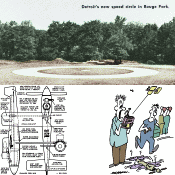 Per "Wild Bill" Netzenband's report in this
1961 issue of American Modeler magazine covered the Vancouver Bi-Liners,
MAC highlights, Alan Nichols' success in Thompson Trophy Racer events, encouraging
clubs to adopt the affordable, and slow-flying contests. He addresses backlogged
club crest submissions, noting the impracticality of featuring all due to volume.
Alan Nichols debunks the myth that models wear out quickly, citing his year-old
Nobler and a five-year-old Fierce Arrow with original engine. Memories resurface
of McDonnell Aircraft's picnic air shows, where Phil Hamm's reliable metal jet stood
out. Southern California's new Control-Line Association, led by John Gudvangan and
others, seeks enthusiasts. Detroit's Metropolitan Speed Association unveils an $8,000
Rouge Park speed circle, aiming for a competitive... Per "Wild Bill" Netzenband's report in this
1961 issue of American Modeler magazine covered the Vancouver Bi-Liners,
MAC highlights, Alan Nichols' success in Thompson Trophy Racer events, encouraging
clubs to adopt the affordable, and slow-flying contests. He addresses backlogged
club crest submissions, noting the impracticality of featuring all due to volume.
Alan Nichols debunks the myth that models wear out quickly, citing his year-old
Nobler and a five-year-old Fierce Arrow with original engine. Memories resurface
of McDonnell Aircraft's picnic air shows, where Phil Hamm's reliable metal jet stood
out. Southern California's new Control-Line Association, led by John Gudvangan and
others, seeks enthusiasts. Detroit's Metropolitan Speed Association unveils an $8,000
Rouge Park speed circle, aiming for a competitive...
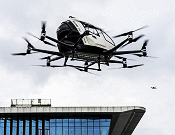 This article entitled "Why Pilots Will Matter
in the Age of
Autonomous Planes" appeared in the June 2025 issue of IEEE's Spectrum
magazine. "Long after planes start flying themselves, humans will still be in the
loop. In August 2001, an anonymous guest posted on the forum at Airliners.net, a
popular aviation website. 'How Long Will Pilots Be Needed?' they wondered, observing
that '20 years or so down the road' technology could be so advanced that planes
would fly themselves. 'So would it really be useful for a person to go to college
now and be an airline pilot if a few years down the road they will be phased out
by technology?' Twenty-four years later, the basic technology required to make aircraft
fly themselves exists, as evidenced by the fact that most commercial flights are
flown largely on autopilot..." This article entitled "Why Pilots Will Matter
in the Age of
Autonomous Planes" appeared in the June 2025 issue of IEEE's Spectrum
magazine. "Long after planes start flying themselves, humans will still be in the
loop. In August 2001, an anonymous guest posted on the forum at Airliners.net, a
popular aviation website. 'How Long Will Pilots Be Needed?' they wondered, observing
that '20 years or so down the road' technology could be so advanced that planes
would fly themselves. 'So would it really be useful for a person to go to college
now and be an airline pilot if a few years down the road they will be phased out
by technology?' Twenty-four years later, the basic technology required to make aircraft
fly themselves exists, as evidenced by the fact that most commercial flights are
flown largely on autopilot..."
 This is the February 8, 1942, "Flyin' Jenny" comic strip. The Baltimore Sun newspaper, published
not far from where I grew up near Annapolis, Maryland, carried "Flyin' Jenny" from
the late 1930s until the strip ended in the mid 1940s, so I saved a couple dozen
from there. The first one I downloaded has a publication date of December 7, 1941
- that date "which will live in infamy," per President Roosevelt. Many Americans
were receiving word over the radio of the Japanese attack on Pearl Harbor while
reading this comic at the breakfast table. I expect that soon there will be World
War II themes. "Flyin' Jenny," whose real name was Virginia Dare (what's in
a name?), was a test pilot for Starcraft Aviation Factory who divided her time between
wringing out new airplane designs and chasing bad guys. She was the creation of
artist and storyteller Russell Keaton... This is the February 8, 1942, "Flyin' Jenny" comic strip. The Baltimore Sun newspaper, published
not far from where I grew up near Annapolis, Maryland, carried "Flyin' Jenny" from
the late 1930s until the strip ended in the mid 1940s, so I saved a couple dozen
from there. The first one I downloaded has a publication date of December 7, 1941
- that date "which will live in infamy," per President Roosevelt. Many Americans
were receiving word over the radio of the Japanese attack on Pearl Harbor while
reading this comic at the breakfast table. I expect that soon there will be World
War II themes. "Flyin' Jenny," whose real name was Virginia Dare (what's in
a name?), was a test pilot for Starcraft Aviation Factory who divided her time between
wringing out new airplane designs and chasing bad guys. She was the creation of
artist and storyteller Russell Keaton...
 This is the complete set of
Peanuts Skediddlers,
sold by Mattel. Linus is extremely difficult to find, and when you do, he typically
sells for $200 or more. If you find a Linus Skediddler with the original box, expect
to pay $400. Over time, our (Melanie and me) Peanuts collection of memorabilia has
grow from the few items she had left over from her girlhood to complete sets. Everything
was gotten via eBay auctions. It took a lot of patience to be able to get good quality
items at an affordable price. Here is a bit of history I gathered on the Skediddlers.
Phenomenon: In the mid-to-late 1960s, Mattel capitalized on the explosive popularity
of Charles M. Schulz's Peanuts comic strip by releasing the Skediddler - a line
of friction-powered toys. Unlike wind-up mechanisms, these toys relied on a simple
push-and-go design: sliding them across a surface activated internal gears, causing
the characters' limbs and heads to jerk in a whimsical "skedaddling"... This is the complete set of
Peanuts Skediddlers,
sold by Mattel. Linus is extremely difficult to find, and when you do, he typically
sells for $200 or more. If you find a Linus Skediddler with the original box, expect
to pay $400. Over time, our (Melanie and me) Peanuts collection of memorabilia has
grow from the few items she had left over from her girlhood to complete sets. Everything
was gotten via eBay auctions. It took a lot of patience to be able to get good quality
items at an affordable price. Here is a bit of history I gathered on the Skediddlers.
Phenomenon: In the mid-to-late 1960s, Mattel capitalized on the explosive popularity
of Charles M. Schulz's Peanuts comic strip by releasing the Skediddler - a line
of friction-powered toys. Unlike wind-up mechanisms, these toys relied on a simple
push-and-go design: sliding them across a surface activated internal gears, causing
the characters' limbs and heads to jerk in a whimsical "skedaddling"...
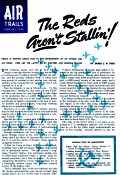 This 1949 Air Trails magazine article
warns that the
Soviet
Union has surpassed the U.S. in military aircraft production by a 15-to-1 margin,
with advanced jet fighters, bombers, and long-range piston-engine planes already
operational. Soviet scientists have also conducted atomic tests and are close to
producing compact A-bombs. Intelligence reveals a Red Air Force of 15,000 first-line
aircraft, including 2,400 jets, some surpassing American designs. The Soviets broke
the sound barrier before the U.S. and have developed powerful turbojet engines,
some with innovative features like variable-pitch stators. German scientists and
captured technology accelerated Soviet progress, particularly in rocketry and jet
propulsion. Their aircraft feature advanced construction techniques, such as metal-plywood
sandwich wings, and superior armament... This 1949 Air Trails magazine article
warns that the
Soviet
Union has surpassed the U.S. in military aircraft production by a 15-to-1 margin,
with advanced jet fighters, bombers, and long-range piston-engine planes already
operational. Soviet scientists have also conducted atomic tests and are close to
producing compact A-bombs. Intelligence reveals a Red Air Force of 15,000 first-line
aircraft, including 2,400 jets, some surpassing American designs. The Soviets broke
the sound barrier before the U.S. and have developed powerful turbojet engines,
some with innovative features like variable-pitch stators. German scientists and
captured technology accelerated Soviet progress, particularly in rocketry and jet
propulsion. Their aircraft feature advanced construction techniques, such as metal-plywood
sandwich wings, and superior armament...
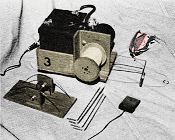 A long time ago (circa
1977) I bought a used glider winch at an auction held by the Prince Georges Radio
Club, in Maryland. It cost me somewhere around $25, which was a lot for me in the
mid 1970s. The motor and control circuitry was contained in a plywood box, with
a jack for the foot switch and terminals to clamp jumper cable to from a car. In
looking at these plans for the
AAM Glider Winch shown
here from the April 1973 American Aircraft Modeler, it looks a lot like mine, only
mine was in a wooden box. It worked extremely well for my 99"
Windfree and 99"
Aquila sailplanes. Unfortunately,
I sold it shortly after getting married in 1983 (couldn't eat the winch). I would
love to have it back. Actually, what I would rather have at this point is a winch
that is powered by a cordless drill that would be lighter... A long time ago (circa
1977) I bought a used glider winch at an auction held by the Prince Georges Radio
Club, in Maryland. It cost me somewhere around $25, which was a lot for me in the
mid 1970s. The motor and control circuitry was contained in a plywood box, with
a jack for the foot switch and terminals to clamp jumper cable to from a car. In
looking at these plans for the
AAM Glider Winch shown
here from the April 1973 American Aircraft Modeler, it looks a lot like mine, only
mine was in a wooden box. It worked extremely well for my 99"
Windfree and 99"
Aquila sailplanes. Unfortunately,
I sold it shortly after getting married in 1983 (couldn't eat the winch). I would
love to have it back. Actually, what I would rather have at this point is a winch
that is powered by a cordless drill that would be lighter...
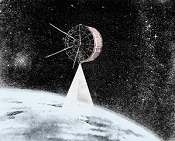 We take for granted most of the technology
that surrounds us. Unless you were alive 60 years ago at the dawn of microelectronics
and space flight, it would be difficult to imagine a world without cellphones, desktop
computers, color TVs, the Internet, and even
satellite-base weather forecasting. Everyone likes to make jokes about weathermen
being no better at predicting the weather than your grandmother's roomatiz[sic],
but the fact is that, especially for short-term (2-3 days) predictions, we get pretty
good information. As a model airplane flyer, I check the wind level forecast nearly
every day to see whether my model plane can handle it. AccuWeather's free hourly
forecast is usually pretty darn accurate for today's and tomorrow's wind... We take for granted most of the technology
that surrounds us. Unless you were alive 60 years ago at the dawn of microelectronics
and space flight, it would be difficult to imagine a world without cellphones, desktop
computers, color TVs, the Internet, and even
satellite-base weather forecasting. Everyone likes to make jokes about weathermen
being no better at predicting the weather than your grandmother's roomatiz[sic],
but the fact is that, especially for short-term (2-3 days) predictions, we get pretty
good information. As a model airplane flyer, I check the wind level forecast nearly
every day to see whether my model plane can handle it. AccuWeather's free hourly
forecast is usually pretty darn accurate for today's and tomorrow's wind...
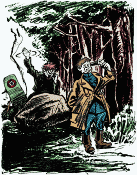 In this 1937 "Smoke Scream" in a 1937 issue
of Flying Aces magazine, by Joe Archibald,
Lt. Phineas
Pinkham, the 9th Pursuit Squadron's resident troublemaker, stumbles into chaos
when he encounters an elephant named Hungha Tin and its Hindu mahout. After the
elephant drinks a bottle of arnica meant for a local's backache, it goes berserk,
wreaking havoc across the Allied camp. Meanwhile, Brigadier Scruggs confesses to
Pinkham that he sleepwalked and handed top-secret battle plans to an unknown spy.
Pinkham, framed by the mahout - who's actually a German agent - unknowingly smokes
a drugged cigarette and nearly flies a stolen Spad to the enemy. The vengeful elephant
interrupts his forced defection, allowing Pinkham to escape with Hauptmann von Spieler
as his prisoner. Back at base, Pinkham... In this 1937 "Smoke Scream" in a 1937 issue
of Flying Aces magazine, by Joe Archibald,
Lt. Phineas
Pinkham, the 9th Pursuit Squadron's resident troublemaker, stumbles into chaos
when he encounters an elephant named Hungha Tin and its Hindu mahout. After the
elephant drinks a bottle of arnica meant for a local's backache, it goes berserk,
wreaking havoc across the Allied camp. Meanwhile, Brigadier Scruggs confesses to
Pinkham that he sleepwalked and handed top-secret battle plans to an unknown spy.
Pinkham, framed by the mahout - who's actually a German agent - unknowingly smokes
a drugged cigarette and nearly flies a stolen Spad to the enemy. The vengeful elephant
interrupts his forced defection, allowing Pinkham to escape with Hauptmann von Spieler
as his prisoner. Back at base, Pinkham...
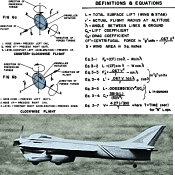 The Academy of Model Aeronautics is granted
tax-exempt status because part of its charter is for activity as an educational
organization. I think as time goes on, it gets harder for the AMA for fulfill that
part of its mission because presenting anything even vaguely resembling mathematics
or science to kids (or to most adults for that matter), is the kiss of death for
gaining or retaining interest. This article, "Control-Line
Aerodynamics Made Painless," was printed in the December 1967 edition of
American Modeler magazine, when graphs, charts, and equations were not eschewed
by modelers. It is awesome. On rare occasions a similar type article will appear
nowadays in Model Aviation magazine for topics like basic aerodynamics and battery
/ motor parameters. Nowadays, it seems, the most rigorous classroom material that
the AMA can manage to slip into schools is a box of gliders and a PowerPoint presentation... The Academy of Model Aeronautics is granted
tax-exempt status because part of its charter is for activity as an educational
organization. I think as time goes on, it gets harder for the AMA for fulfill that
part of its mission because presenting anything even vaguely resembling mathematics
or science to kids (or to most adults for that matter), is the kiss of death for
gaining or retaining interest. This article, "Control-Line
Aerodynamics Made Painless," was printed in the December 1967 edition of
American Modeler magazine, when graphs, charts, and equations were not eschewed
by modelers. It is awesome. On rare occasions a similar type article will appear
nowadays in Model Aviation magazine for topics like basic aerodynamics and battery
/ motor parameters. Nowadays, it seems, the most rigorous classroom material that
the AMA can manage to slip into schools is a box of gliders and a PowerPoint presentation...
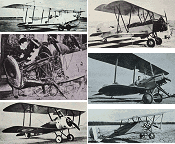 Peter Bowers first became know to me because
of his Fly Baby homebuilt airplane. It won the
Experimental
Aircraft Association (EAA) design contest in 1962. Back in the middle and late
1970s, I was taking flying lessons and dreaming big about building my own aerobatic
biplane. Being an avid woodworker, the Fly Baby appealed to me because it was constructed
entirely of wood, except for a few critical metal fittings. My plan was to build
the biplane version of the Fly Baby. Like so many other things, the aeroplane never
got built. Peter Bowers was not only an aeronautical engineer and airplane designer
but also an aviation historian and model airplane enthusiast... Peter Bowers first became know to me because
of his Fly Baby homebuilt airplane. It won the
Experimental
Aircraft Association (EAA) design contest in 1962. Back in the middle and late
1970s, I was taking flying lessons and dreaming big about building my own aerobatic
biplane. Being an avid woodworker, the Fly Baby appealed to me because it was constructed
entirely of wood, except for a few critical metal fittings. My plan was to build
the biplane version of the Fly Baby. Like so many other things, the aeroplane never
got built. Peter Bowers was not only an aeronautical engineer and airplane designer
but also an aviation historian and model airplane enthusiast...
 "FlightGear" is an Open Source (aka
Free) flight simulator program which I first wrote about in 2012. It has come a
long way - and was pretty dran good, aven back then - and is now a viable competitor
for Microsoft's Flight Simulator (MSFS). The leatest release as of this writing
is 2024.1.1. The graphics are superb and easily on par with MSFS. FlightGear has
a joystick interface, but I don't own a joystick, so my experience with it using
keyboard inputs. VR headsets are also supported now. The basic download comes with
a couple dozen aircraft, and there are many additional models available as separate
downloads. FlightGear runs on Windows, macOS and Linux. Thanks to all the folks
who have spent their valuable time developing FlightGear! FlightGear website: "FlightGear
is an open-source flight simulator. It supports a variety of popular platforms (Windows,
Mac, Linux, etc.) and is developed by skilled volunteers from around the world... "FlightGear" is an Open Source (aka
Free) flight simulator program which I first wrote about in 2012. It has come a
long way - and was pretty dran good, aven back then - and is now a viable competitor
for Microsoft's Flight Simulator (MSFS). The leatest release as of this writing
is 2024.1.1. The graphics are superb and easily on par with MSFS. FlightGear has
a joystick interface, but I don't own a joystick, so my experience with it using
keyboard inputs. VR headsets are also supported now. The basic download comes with
a couple dozen aircraft, and there are many additional models available as separate
downloads. FlightGear runs on Windows, macOS and Linux. Thanks to all the folks
who have spent their valuable time developing FlightGear! FlightGear website: "FlightGear
is an open-source flight simulator. It supports a variety of popular platforms (Windows,
Mac, Linux, etc.) and is developed by skilled volunteers from around the world...
 The October 1950 Air Trails magazine
showcases
modelers' innovations, including H.G. Oliver's Plexiglas skids for speed models
and Don Nelson's booster battery setup. Ray Biernacki suggests keeping brushes soft
with thinner fumes, while Richard Larson offers a footswitch for bench testing.
Ted Jones improves dethermalizer safety, and Charles Francis simplifies its design.
Willard Hafler's flying wing excels in speed and sport flying, and Leon Shulman
repurposes a crankcase recess as a fuel tank. The magazine encourages readers to
submit their own ideas, paying $2 per accepted sketch. These practical, cost-saving
solutions highlight the creativity of mid-century model aviation enthusiasts, blending
engineering ingenuity with accessible materials - a snapshot of hobbyist innovation
in postwar America... The October 1950 Air Trails magazine
showcases
modelers' innovations, including H.G. Oliver's Plexiglas skids for speed models
and Don Nelson's booster battery setup. Ray Biernacki suggests keeping brushes soft
with thinner fumes, while Richard Larson offers a footswitch for bench testing.
Ted Jones improves dethermalizer safety, and Charles Francis simplifies its design.
Willard Hafler's flying wing excels in speed and sport flying, and Leon Shulman
repurposes a crankcase recess as a fuel tank. The magazine encourages readers to
submit their own ideas, paying $2 per accepted sketch. These practical, cost-saving
solutions highlight the creativity of mid-century model aviation enthusiasts, blending
engineering ingenuity with accessible materials - a snapshot of hobbyist innovation
in postwar America...
|
 Given the "Hydro Hints" title of this article
from the September 1949 issue of Air Trails magazine, I though it would be about
model hydroplanes, but it turned out to be about designing and building floats (pontoons)
for free flight and control line airplanes.
Rise
Off Water (ROW) has been a popular sport flying and contest event for about
as long as model airplanes have been around. Unlike with R/C water flying, these
floats needed only to function as launching devices since unless you are flying
off a large body of water, it is unlikely that the model would also be landing on
water. In fact, many ROW flights are initiated from a make-shift "puddle" consisting
of a child's plastic wading pool or a small area in the ground that has been filled
with water specifically for the event. Take-off run distances are extremely short
unless the model runs into trouble or the floats and/or airplane are poorly designed... Given the "Hydro Hints" title of this article
from the September 1949 issue of Air Trails magazine, I though it would be about
model hydroplanes, but it turned out to be about designing and building floats (pontoons)
for free flight and control line airplanes.
Rise
Off Water (ROW) has been a popular sport flying and contest event for about
as long as model airplanes have been around. Unlike with R/C water flying, these
floats needed only to function as launching devices since unless you are flying
off a large body of water, it is unlikely that the model would also be landing on
water. In fact, many ROW flights are initiated from a make-shift "puddle" consisting
of a child's plastic wading pool or a small area in the ground that has been filled
with water specifically for the event. Take-off run distances are extremely short
unless the model runs into trouble or the floats and/or airplane are poorly designed...
 As you can tell from all the vintage modeling
and electronics magazine I own and use to post various article, I am prone to waxing
nostalgic about the days of yore. Being born in 1958, I am part of the last generation
of people brought up at a time when patriotism, courtesy, manners, and civility
was taught in school and in the public square by fellow citizens and even politicians.
However, there are limits to my desire to enjoy the environment of the good 'ole
days, and one of them is the need to build (often), tune, and repair nearly all
the electronic equipment used in model aviation and model boating activities. This
"Radio
Controlled Model Sailboat" article from a 1948 issue of Radio News
magazine is a prime example of what I mean. While knowing how to do all the work
involved in the system created by these two Raytheon engineers is a great achievement,
the work involved is extremely time consuming and takes away significantly from
the time actually spent enjoying sailing the boat. Modern compact, powerful, reliable,
relatively inexpensive, fully proportional, feature-packed radio systems are much
preferred over the former. Here is a short tale of my own venture into R/C sailboating
with a Thunder Tiger Victoria sloop, circa 2000... As you can tell from all the vintage modeling
and electronics magazine I own and use to post various article, I am prone to waxing
nostalgic about the days of yore. Being born in 1958, I am part of the last generation
of people brought up at a time when patriotism, courtesy, manners, and civility
was taught in school and in the public square by fellow citizens and even politicians.
However, there are limits to my desire to enjoy the environment of the good 'ole
days, and one of them is the need to build (often), tune, and repair nearly all
the electronic equipment used in model aviation and model boating activities. This
"Radio
Controlled Model Sailboat" article from a 1948 issue of Radio News
magazine is a prime example of what I mean. While knowing how to do all the work
involved in the system created by these two Raytheon engineers is a great achievement,
the work involved is extremely time consuming and takes away significantly from
the time actually spent enjoying sailing the boat. Modern compact, powerful, reliable,
relatively inexpensive, fully proportional, feature-packed radio systems are much
preferred over the former. Here is a short tale of my own venture into R/C sailboating
with a Thunder Tiger Victoria sloop, circa 2000...
 The Academy of Model Aeronautics is granted
tax-exempt status because part of its charter is for activity as an educational
organization. I think as time goes on, it gets harder for the AMA for fulfill that
part of its mission because presenting anything even vaguely resembling mathematics
or science to kids (or to most adults for that matter), is the kiss of death for
gaining or retaining interest. This article, "Control-Line
Aerodynamics Made Painless," was printed in the July/August 1966 edition of
American Modeler, when graphs, charts, and equations were not eschewed
by modelers. It is awesome. On rare occasions a similar type article will appear
nowadays in Model Aviation for topics like basic aerodynamics and battery / motor
parameters. Nowadays, it seems, the most rigorous classroom material that the AMA
can manage to slip into schools is a box of gliders and a PowerPoint presentation... The Academy of Model Aeronautics is granted
tax-exempt status because part of its charter is for activity as an educational
organization. I think as time goes on, it gets harder for the AMA for fulfill that
part of its mission because presenting anything even vaguely resembling mathematics
or science to kids (or to most adults for that matter), is the kiss of death for
gaining or retaining interest. This article, "Control-Line
Aerodynamics Made Painless," was printed in the July/August 1966 edition of
American Modeler, when graphs, charts, and equations were not eschewed
by modelers. It is awesome. On rare occasions a similar type article will appear
nowadays in Model Aviation for topics like basic aerodynamics and battery / motor
parameters. Nowadays, it seems, the most rigorous classroom material that the AMA
can manage to slip into schools is a box of gliders and a PowerPoint presentation...
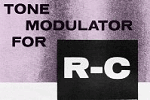 Declaring
any kind of straight LC tank circuit to be high stability is a bit of a stretch
when compared to the Q available simply by adding a crystal, even in 1958. Tone
modulation was an early method for achieving remote control of model airplanes,
boats, and cars. The number of channels with these
tone modulation systems is two times the number of modern proportional systems
in that moving the rudder left took one channel and moving it right took another.
Up and down elevator likewise took two channels. Therefore, this four channel system
is only two channels by today's terminology. Technology evolved into fully proportional
systems on crystal-controlled 27 MHz using pulse position modulation (PPM),
then to 72 MHz, and today nearly every every R/C uses a combination of frequency-hopping
spread spectrum (FHSS) and direct-sequence spread spectrum (DSSS) in the 2.4 GHz
ISM band... Declaring
any kind of straight LC tank circuit to be high stability is a bit of a stretch
when compared to the Q available simply by adding a crystal, even in 1958. Tone
modulation was an early method for achieving remote control of model airplanes,
boats, and cars. The number of channels with these
tone modulation systems is two times the number of modern proportional systems
in that moving the rudder left took one channel and moving it right took another.
Up and down elevator likewise took two channels. Therefore, this four channel system
is only two channels by today's terminology. Technology evolved into fully proportional
systems on crystal-controlled 27 MHz using pulse position modulation (PPM),
then to 72 MHz, and today nearly every every R/C uses a combination of frequency-hopping
spread spectrum (FHSS) and direct-sequence spread spectrum (DSSS) in the 2.4 GHz
ISM band...
 On July 21, 2013, Melanie and I toured the
inside of the "Memphis Belle"
that was used in filming the movie of the same name. North Coast Air, based at Erie
International Airport, hosted the event. This particular B−17 Flying Fortress is
not the original Memphis Belle, but is a version that was produced in 1945, near
the end of World War II. It is being leased by the Liberty Foundation
for country-wide public tours while the ill-fated Liberty Belle is being restored.
Rides were being offered for around $500 per seat, so we had to pass on that. I'd
gladly pay the price if we could afford it, because the costs of operating such
an aircraft is enormous. Fortunately, wealthy sponsors pay for the majority of the
expenses. The Smithsonian of course has a fully restored B−17, but it sits in a
museum and never takes to the air. The B−17's four Pratt & Whitney R-1690 Hornet
radial engines make an unmistakable sound in the air, as do other multi-engine World
War II era planes. I still run outside the house an search the skies when I
hear such a sweet noise.. On July 21, 2013, Melanie and I toured the
inside of the "Memphis Belle"
that was used in filming the movie of the same name. North Coast Air, based at Erie
International Airport, hosted the event. This particular B−17 Flying Fortress is
not the original Memphis Belle, but is a version that was produced in 1945, near
the end of World War II. It is being leased by the Liberty Foundation
for country-wide public tours while the ill-fated Liberty Belle is being restored.
Rides were being offered for around $500 per seat, so we had to pass on that. I'd
gladly pay the price if we could afford it, because the costs of operating such
an aircraft is enormous. Fortunately, wealthy sponsors pay for the majority of the
expenses. The Smithsonian of course has a fully restored B−17, but it sits in a
museum and never takes to the air. The B−17's four Pratt & Whitney R-1690 Hornet
radial engines make an unmistakable sound in the air, as do other multi-engine World
War II era planes. I still run outside the house an search the skies when I
hear such a sweet noise..
 My original
Top Flite Monokote
Sealing Iron, purchased in the mid-1970s, lasted until the late 1990s, when
the heating element burned out. A quarter century of use was not too bad. To replace
it, I bought a Tower Hobbies iron, and the first time I used it the handle started
to bend where it transitions from a hollow round shape to a flat shape. The metal
was noticeably softer than the Top Flite handle, which never even hinted at bending.
For two decades I have had to be very careful not to press too hard on the iron
lest it bend. After many times of bending and straightening the handle, a major
stress crack had formed, and it was pretty evident that the handle would not last
much longer. I would either need to buy a new Monokote sealing iron, which in all
likelihood would be equally cheaply built since Top Flite does not make them anymore,
or come up with some kind or repair for this one... My original
Top Flite Monokote
Sealing Iron, purchased in the mid-1970s, lasted until the late 1990s, when
the heating element burned out. A quarter century of use was not too bad. To replace
it, I bought a Tower Hobbies iron, and the first time I used it the handle started
to bend where it transitions from a hollow round shape to a flat shape. The metal
was noticeably softer than the Top Flite handle, which never even hinted at bending.
For two decades I have had to be very careful not to press too hard on the iron
lest it bend. After many times of bending and straightening the handle, a major
stress crack had formed, and it was pretty evident that the handle would not last
much longer. I would either need to buy a new Monokote sealing iron, which in all
likelihood would be equally cheaply built since Top Flite does not make them anymore,
or come up with some kind or repair for this one...
 "...the new World War has clamped down the
screens of censorship, hence we shall be lucky to get anything much in the way of
info and pictures on new equipment to be used by the warring nations." That appeared
in the December 1939 issue of Flying Aces magazines. Most people here in
America think of World War II beginning on December 7th, 1941, with the Japanese
attack on Pearl Harbor. In actuality, the war began much sooner with Hitler's and
Hirohito's invasions in Europe (and North Africa) and Asia (South China and South
Pacific), respectively. The accepted start date is September 1, 1939, following
Hitler's invasion of Poland. Since a December magazine issue typically went to press
in October or October, the war had only begun a month or two earlier. Of particular
interest here (to me, anyway) is the
Curtiss XP−42, obviously a modification of the P−40 Warhawk, but with a noticeably
different cowl. Its shape suggests an inline type engine, but reportedly it housed
a Pratt & Whitney Twin Wasp radial... "...the new World War has clamped down the
screens of censorship, hence we shall be lucky to get anything much in the way of
info and pictures on new equipment to be used by the warring nations." That appeared
in the December 1939 issue of Flying Aces magazines. Most people here in
America think of World War II beginning on December 7th, 1941, with the Japanese
attack on Pearl Harbor. In actuality, the war began much sooner with Hitler's and
Hirohito's invasions in Europe (and North Africa) and Asia (South China and South
Pacific), respectively. The accepted start date is September 1, 1939, following
Hitler's invasion of Poland. Since a December magazine issue typically went to press
in October or October, the war had only begun a month or two earlier. Of particular
interest here (to me, anyway) is the
Curtiss XP−42, obviously a modification of the P−40 Warhawk, but with a noticeably
different cowl. Its shape suggests an inline type engine, but reportedly it housed
a Pratt & Whitney Twin Wasp radial...
 Airplanes and Rockets website visitor Michael
M. wrote to request that I post this article, along with the ones for the
Satellite 1000 free-flight champion,
and The Giants of Free Flight. His reason was that he wanted to get his flying team
back together again in Bill Hunter, who passed away recently. This 1972 American
Aircraft Modeler magazine article on covering with Mylar is very extensive
and is another example of such efforts that were common in hobby magazines of decades
ago - a large part of my motivation for making them available. It is rare... Airplanes and Rockets website visitor Michael
M. wrote to request that I post this article, along with the ones for the
Satellite 1000 free-flight champion,
and The Giants of Free Flight. His reason was that he wanted to get his flying team
back together again in Bill Hunter, who passed away recently. This 1972 American
Aircraft Modeler magazine article on covering with Mylar is very extensive
and is another example of such efforts that were common in hobby magazines of decades
ago - a large part of my motivation for making them available. It is rare...
 Website visitor Dan T. (see his photos
from a decades-ago use of this method) wrote to ask that I scan and post this article,
which appeared in the 1962 Annual edition of American Modeler magazine,
on
making fiberglass cowls. It is a variation on vacuum bagging that
exploits the even tension applied by the elasticity of a rubber balloon. Although
limited to relatively small forms, it has the advantage of low cost and complexity,
and it eliminates the potential nuisance of the mold release agent not being fully
coated and causing separation issues. This method will probably not work too well
with shapes that need localized indented areas more than 1/32" to maybe 1/16" deep
(like cooling fins). The article did not originally make ... Website visitor Dan T. (see his photos
from a decades-ago use of this method) wrote to ask that I scan and post this article,
which appeared in the 1962 Annual edition of American Modeler magazine,
on
making fiberglass cowls. It is a variation on vacuum bagging that
exploits the even tension applied by the elasticity of a rubber balloon. Although
limited to relatively small forms, it has the advantage of low cost and complexity,
and it eliminates the potential nuisance of the mold release agent not being fully
coated and causing separation issues. This method will probably not work too well
with shapes that need localized indented areas more than 1/32" to maybe 1/16" deep
(like cooling fins). The article did not originally make ...
 Some companies
have expressed an interest in being able to target Airplanes and Rockets via the
Google
AdSense program. Yes, it is possible to do that. As you might expect, finding
the exact information on the Google AdSense website is a bit difficult. This short
video does a good job summarizing exactly how to implement the "Ad Targeting" option,
then "Placements," and then add "Websites." Just enter airplanesandrockets.com
. There are other settings to optimize your advertising campaign with keywords (both
included and excluded), pricing, scheduling, statistical data collection and reporting,
etc. If you are currently using Google AdSense, then please consider this method,
and if you are not using AdSense, now would be a good time to look into it. I have
had reports from some companies that experience great results using AdSense (not
just on Airplanes and Rockets)... Some companies
have expressed an interest in being able to target Airplanes and Rockets via the
Google
AdSense program. Yes, it is possible to do that. As you might expect, finding
the exact information on the Google AdSense website is a bit difficult. This short
video does a good job summarizing exactly how to implement the "Ad Targeting" option,
then "Placements," and then add "Websites." Just enter airplanesandrockets.com
. There are other settings to optimize your advertising campaign with keywords (both
included and excluded), pricing, scheduling, statistical data collection and reporting,
etc. If you are currently using Google AdSense, then please consider this method,
and if you are not using AdSense, now would be a good time to look into it. I have
had reports from some companies that experience great results using AdSense (not
just on Airplanes and Rockets)...
 Airplanes and Rockets website visitor Rob P.
wrote to ask that I post the construction article for George Wilson's "Quick Floats,"
which appeared in the May 1973 issue of American Aircraft Modeler magazine.
It's nice to know that even with all the prefabricated floats available for purchase
today that there is still someone who prefers to build his own. The original Quick
Floats design was sized for a .60-powered stunt airplane, but you can easily scale
them up or down as needed to fit your model. I normally do not include a full-resolution
scan in order to give the AMA Plans Service an opportunity to sell a copy (very
low prices); however, a visit to their website does not show a listing for Quick
Floats. Click on the plans images below for the larger versions. Beware that scans
from the magazine may contain skew ... Airplanes and Rockets website visitor Rob P.
wrote to ask that I post the construction article for George Wilson's "Quick Floats,"
which appeared in the May 1973 issue of American Aircraft Modeler magazine.
It's nice to know that even with all the prefabricated floats available for purchase
today that there is still someone who prefers to build his own. The original Quick
Floats design was sized for a .60-powered stunt airplane, but you can easily scale
them up or down as needed to fit your model. I normally do not include a full-resolution
scan in order to give the AMA Plans Service an opportunity to sell a copy (very
low prices); however, a visit to their website does not show a listing for Quick
Floats. Click on the plans images below for the larger versions. Beware that scans
from the magazine may contain skew ...
 Website visitor Robert C. wrote to
request that I post the article and plans for the
British
Bristol "170" Freighter that appeared in the 1961 Annual edition of American
Modeler magazine. This control line version has a 40" wingspan and is powered
by a pair of .049s for scale-like flight characteristics or a pair .09s if you want
aerobatics. Diesels are shown installed in the original. The fuselage, wing, and
tails surfaces are all built-up and sheeted with balsa, so she is a sturdy bird.
As with most of these vintage models that used glow engines, conversion to electric
can be easily made, and lightening of the structure can be safely done since motors
do not create the extreme vibration loads of internal combustion engines. For instance,
the balsa sheeting of the entire wing could be reduced to only the root area at
the fuselage, and then maybe add a stringer or two along the leading edge top area... Website visitor Robert C. wrote to
request that I post the article and plans for the
British
Bristol "170" Freighter that appeared in the 1961 Annual edition of American
Modeler magazine. This control line version has a 40" wingspan and is powered
by a pair of .049s for scale-like flight characteristics or a pair .09s if you want
aerobatics. Diesels are shown installed in the original. The fuselage, wing, and
tails surfaces are all built-up and sheeted with balsa, so she is a sturdy bird.
As with most of these vintage models that used glow engines, conversion to electric
can be easily made, and lightening of the structure can be safely done since motors
do not create the extreme vibration loads of internal combustion engines. For instance,
the balsa sheeting of the entire wing could be reduced to only the root area at
the fuselage, and then maybe add a stringer or two along the leading edge top area...
 Your knowledge of model aircraft kits, engines,
and equipment will need to stretch back a couple decades to score 10 out of 10 on
this model-aircraft-themed
quiz. Winners get a free 1-year subscription to the Airplanes and Rockets website
;-) Good luck! Your knowledge of model aircraft kits, engines,
and equipment will need to stretch back a couple decades to score 10 out of 10 on
this model-aircraft-themed
quiz. Winners get a free 1-year subscription to the Airplanes and Rockets website
;-) Good luck!
 Roughly fifty years after my first failed
attempt at building a 1/4th−scale
Visible V−8
Engine kit, I decided to buy another and try again. It is amazing that the kit
is still produced (by Revell now, not the original by Renwal), especially given
that very few of the old V-8s - the ones with points and condenser ignition, mechanical
carburetor, belt-driven cooling fan, etc. - are running anymore. Many, unfortunately,
were destroyed as part of the heinous Cash for Clunkers program in 2009 that served
primarily to remove from service classic cars and trucks from U.S. manufactures
...but I digress. If memory serves me properly, back in the era by the time I had
all the moving parts assembled and installed, none of them moved anymore ... Roughly fifty years after my first failed
attempt at building a 1/4th−scale
Visible V−8
Engine kit, I decided to buy another and try again. It is amazing that the kit
is still produced (by Revell now, not the original by Renwal), especially given
that very few of the old V-8s - the ones with points and condenser ignition, mechanical
carburetor, belt-driven cooling fan, etc. - are running anymore. Many, unfortunately,
were destroyed as part of the heinous Cash for Clunkers program in 2009 that served
primarily to remove from service classic cars and trucks from U.S. manufactures
...but I digress. If memory serves me properly, back in the era by the time I had
all the moving parts assembled and installed, none of them moved anymore ...
 Back in the early to mid 1970s, I built a
Sterling Cirrus sailplane kit. Shortly thereafter
I bought my first radio control system (a used
3-channel OS Digitron),
and in a somewhat desperate attempt to fly an RC glider, actually managed to cram
two of its huge servos, a huge metal-cased receiver, and a NiCad airborne battery
pack (the only part that has not gotten smaller in the intervening 50 years) into
the cockpit area. Although the cockpit was very spacious, the balsa frame construction
was way too weak to support a radio system, but that didn't stop me... well, not
right away anyway. The ready-to-fly weight was probably three times the recommended
12 ounce nominal. Although the Cirrus has a generous 87-5/16" wingspan, with it
25:1 aspect ratio, the root chord is only a little over 4" and the wingtip chord
is around 1". Even with vertical sheer webbing between the upper and lower main
spars, the wing was far too weak for so much weight. After much work covering the
undercambered airfoil and compound curves around the fuselage with Japanese tissue
and brushing on a few coats of clear dope, it was finally ready to fly... Back in the early to mid 1970s, I built a
Sterling Cirrus sailplane kit. Shortly thereafter
I bought my first radio control system (a used
3-channel OS Digitron),
and in a somewhat desperate attempt to fly an RC glider, actually managed to cram
two of its huge servos, a huge metal-cased receiver, and a NiCad airborne battery
pack (the only part that has not gotten smaller in the intervening 50 years) into
the cockpit area. Although the cockpit was very spacious, the balsa frame construction
was way too weak to support a radio system, but that didn't stop me... well, not
right away anyway. The ready-to-fly weight was probably three times the recommended
12 ounce nominal. Although the Cirrus has a generous 87-5/16" wingspan, with it
25:1 aspect ratio, the root chord is only a little over 4" and the wingtip chord
is around 1". Even with vertical sheer webbing between the upper and lower main
spars, the wing was far too weak for so much weight. After much work covering the
undercambered airfoil and compound curves around the fuselage with Japanese tissue
and brushing on a few coats of clear dope, it was finally ready to fly... |


